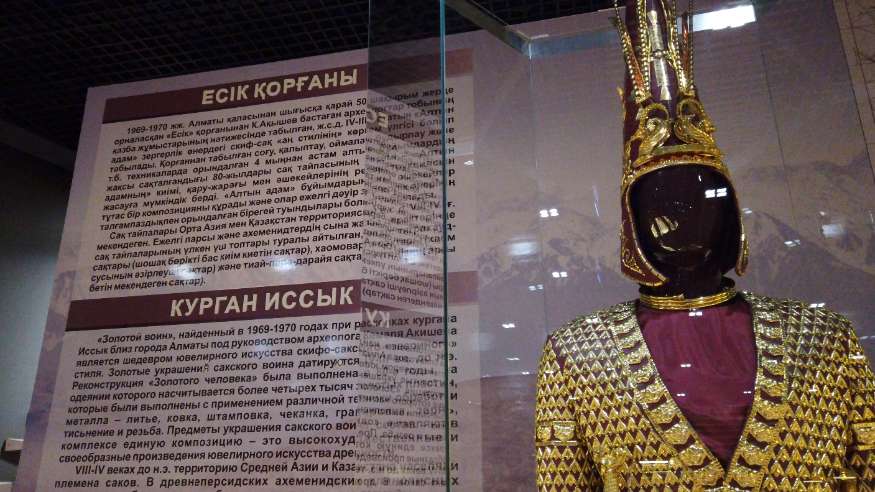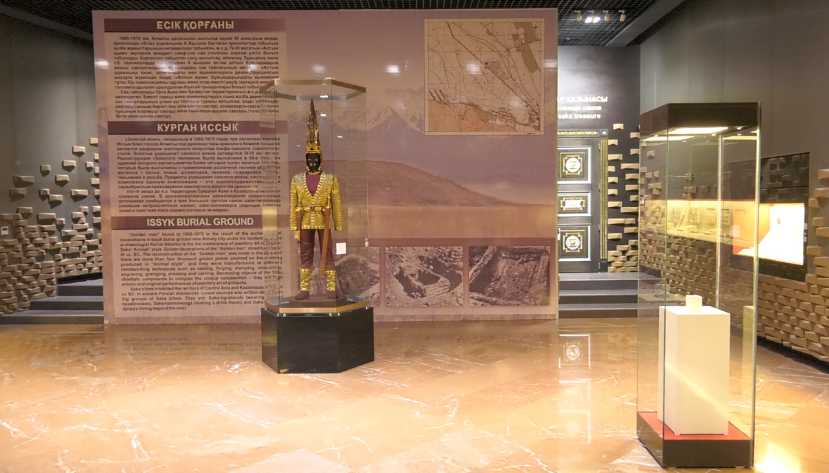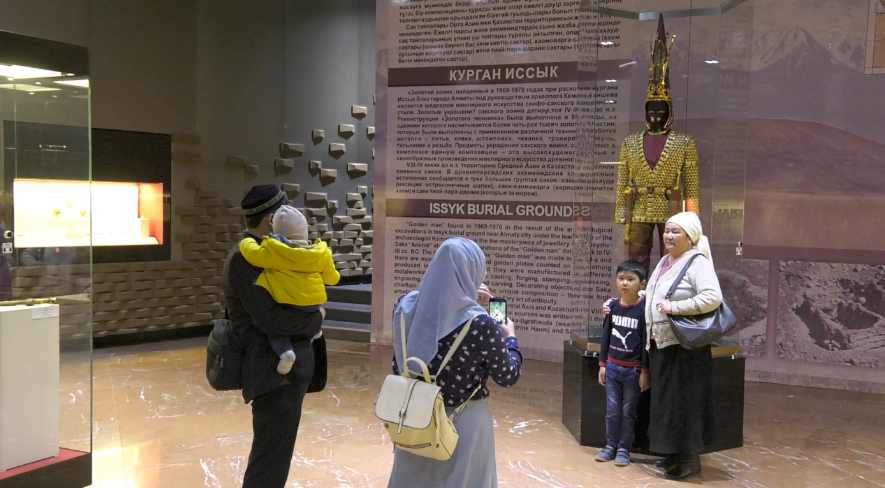
Culture
13:40, 30-Apr-2019
Kazakhstan's national treasure: The Golden Man
By Michal Bardavid

National treasures tell the stories of the past and lessons of history, and they often bridge between civilizations. They enlighten us today of what has happened in the past. One such treasure is displayed in Kazakhstan's capital Nur-Sultan. One that has become a source of pride for Kazakh people; a legendary warrior that represents Kazakh culture around the world – he is known as the Golden Man.
The unique cultural relics' unearthing was made in 1969 in the town of Issyk, near the city of Almaty, by archaeologist Kemal Akishev. Experts believe the remains found in the burial date to around the 2nd to 3rd century BC and belong to a soldier of the Saka tribes – ancestors of the Kazakh people.

Golden Man on display in the national museum in Kazakhstan's capital Nur-Sultan. /CGTN Photo
Golden Man on display in the national museum in Kazakhstan's capital Nur-Sultan. /CGTN Photo
The Golden Man wears a headdress with upward pointing arrows and snow leopards – powerful symbols of the fighter. On his red colored clothing, golden plates are embroidered with mythical animal motifs. The Golden Man on display at the national museum in Nur-Sultan is a replica; the original is kept in a secure room with special room temperature. It has become an important symbol of Kazakhstan's ancient roots and cultural heritage. In 2013, archeologists also found a Golden Woman, from the bones found in the burial, they believe it belonged to someone between 30-35 years of age.
Each year thousands of locals and tourists visit the museum to see this national treasure… many are fascinated with what it teaches them - about different civilizations. Anna, a tourist traveling with her nine-year-old son and husband says the Golden Man impressed her more than “the mummy in Egypt, this is even more interesting for me and I will buy a book and read more things because it's very new for me and when we came here I knew nothing about Kazakhstan and now we are really impressed with all the things that I'm seeing.” Many schools also arrange visits to the national museum for daily trips to teach children about their own history and cultural backgrounds.

Visitors pose for pictures with the Golden Man displayed in the national museum in Kazakhstan's capital Nur-Sultan. /CGTN Photo
Visitors pose for pictures with the Golden Man displayed in the national museum in Kazakhstan's capital Nur-Sultan. /CGTN Photo
During the discovery of the Golden Man, archaeologists also found over 4,000 golden pieces of jewelry, many of which are displayed at the museum. A representative of the National Museum of Kazakhstan, Nurassyl Smagulov says they think that it's a ritual when they bury the social position higher men, after the death they can use all of this gold, they can save a spirit maybe like this." It is also believed that gold carried great significance for warriors during battle. Smagulov explains that in “ancient writings, Greek writings and Chinese writings, in the mythology they all dressed with golden jewelry and in the mythology when they attack some tribes in that time, they fear the gold, gold blinds.”
The Golden Man is often exhibited in different countries around the world, an honor given by the Kazakh government in hopes of increasing dialogue among nations.

SITEMAP
Copyright © 2018 CGTN. Beijing ICP prepared NO.16065310-3
Copyright © 2018 CGTN. Beijing ICP prepared NO.16065310-3